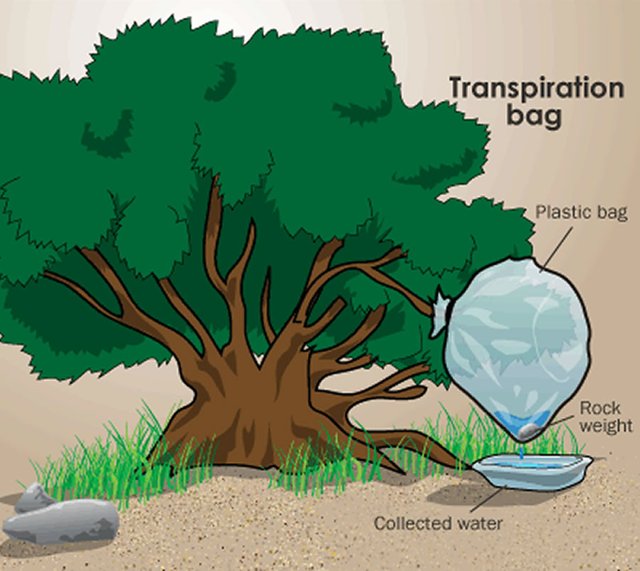Steemit Suirvival Series Part 1: water is more valuable than gold!
Water is essential to life. All life depends upon it and all living things contain it. The average person can survive for three weeks without food but for only three day's without water. It is the number one priority. Don't wait until you have run out of water before you look for it.
Conserve what you have and seek a source as soon as possible, preferably fresh running water, though all water can be sterilized by boiling or the use of chemical purifiers.
The human body is 75% water. It is the coolant that keeps the body at an even temperature, it is needed to keep the kidneys functioning to eliminate waists and it is in some ways the conductor or vehicle for nerve impulses. But the fluids contained in the body are limited. Lost water must be replaced or health and efficiency will suffer.
Water Loss
The average person loses 2-3 liters (4-6pt) of water each day - even someone resting in shade loses about 1 liter (2pt). Just breathing loses fluids, and loss through respiration and perspiration increases with work rate and temperature. Vomiting and diarrhea in illness increases loss further . This must all be replaced to preserve the critical water balance, either by actual water or water contained in food.
How To Retain Fluids
Keep your fluid loss to a minimum, take the following precautions:
- Avoid exertion. Just rest.
- Don't smoke!
- Keep cool. Stay in the shade. If there is none erect a cover to provide it.
- Do not lie on hot ground or heated surfaces
- Don't eat, or eat as little as possible. If there is no water available fluid will be taken from the vital organs to digest food, further increasing dehydration. Fat is hardest to digest and takes a lot of fluid to break it down.
- Never drink alcohol. This also takes fluid from vital organs to break it down.
Finding Water
The first place to look is in valley bottoms where water naturally drains. If there is no obvious stream or pool, look for patches of green vegetation and try digging there. There may be water just below the surface which will build up in the hole. Even digging in gullies and dry stream beds may reveal a spring beneath the surface, especially in gravely areas. In mountains look for water trapped in crevices.
On the coast digging above the high water line, especially where there are sand dunes, has a good chance of producing about 5cm (2in) of fresh water that filters down and floats on the heavier salt water. It may be brackish but is still drinkable. Where cliffs fall into the sea look for lush growth of vegetation, even ferns and mosses, in faults can be used to find a soak or spring.
Using Condensation to Collect Water
Choose healthy vegetation and bushy branches. On trees keep the mouth of the bag at the top with a corner hanging low to drain or collect condensed evaporation.
Tree and plant roots draw moister from the ground, but a tree may take it from a water table 15m (50ft) or more below, to deep to dig down to reach. Don't try; let the tree pump it up for you by tying a plastic bag around a leafy branch. Evaporation from the leaves will produce condensation in the bag.
Solar Still

Roughen the underside of the sheet towards the center with a stone to ensure the droplets run down it. Use stones or weights to secure edges and keep cone shape. Fix can so that trapped creatures cannot tip it over.
Dig a hole in the ground approximately 90cm (36in) across and 45cm (18in) deep. Place a collecting can in the center, then cover the hole with a sheet of plastic formed into a cone. The sun's heat raises the temperature of the air and soil below and vapor is produced. as the air becomes saturated, water condenses on the underside of the plastic, running down and dripping into the container. This is especially effective in desert regions and elsewhere when it is hot during the day and cold at night. The plastic cools more quickly than the air, causing heavy condensation. This kind of still should collect at least 55cc (1pt) over a 24-hour period.
This still may also double as a trap. Insects and small snakes are attracted by the plastic. They may slide down into the cone or wriggle underneath it and drop into the hole and then cannot climb out. A solar still can be used to distill pure water from poisonous or contaminated liquids.
Thanks for reading my first post in the #steemitsurvivalseries. Please follow me @bitminter for my next post on survival strategies and DIY survival skills. Looking forward to your comments.
Please click on images for image source.
Cheerz


Hi @bitminter, I found large sections of your post in the SAS Survival Handbook from John Wiseman. Are you the author? Could you confirm this please? Thank you!
I don't drink enough water....it's funny i went to bed last night thinking i need to drink more water and this has just triggered the thought process again! Thank you. It also helps me keep off the pounds!
Great post thanks for sharing! I really enjoy this kind of thing and find it very interesting.